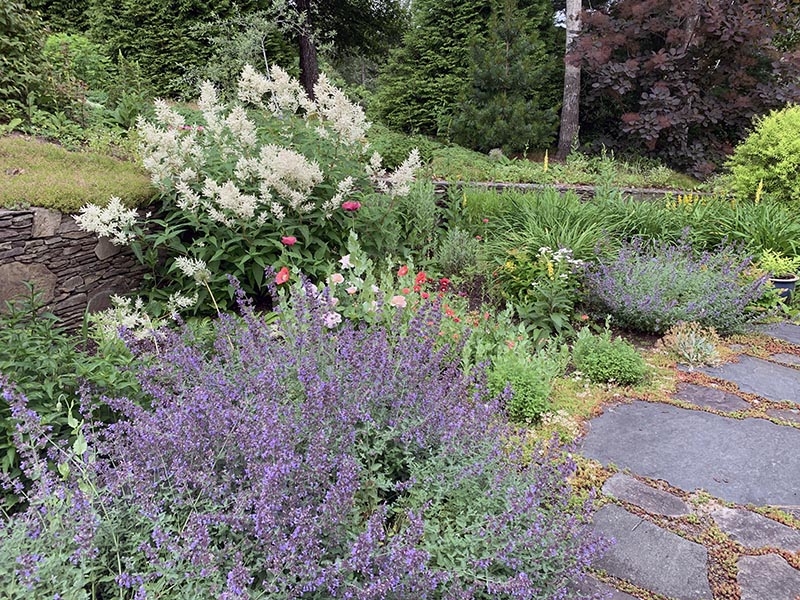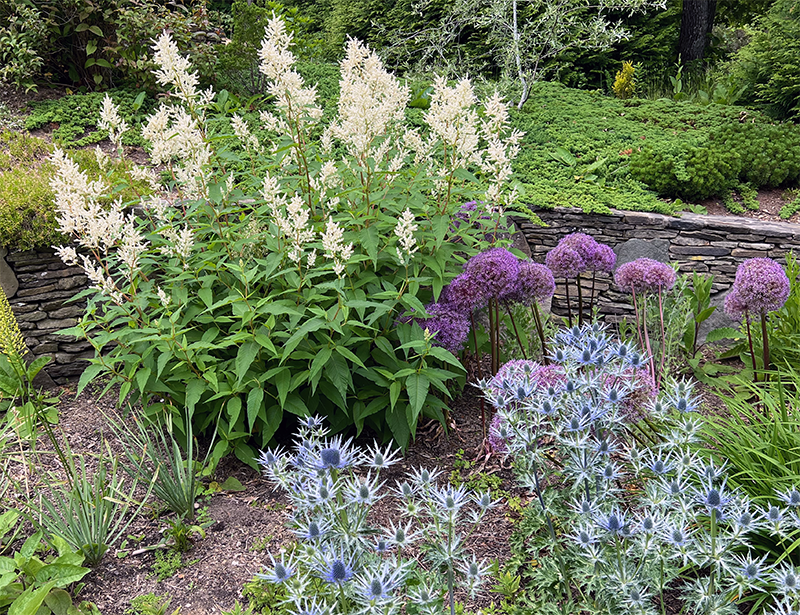Name: Persicaria polymorpha aka Giant Fleece Flower
Type of Plant: A large, June-flowering perennial that’s hardy in Zones 4 to 9.
Why I Love This Plant: This reliable perennial thrives in full sun in gardens that are deeply watered once a week. It’s like an Astilbe on steroids! Dark green leaves and white plumes of flowers make this a show-stopper plant in the back of a perennial garden, or in front of taller flowering shrubs. I love the fact that I don’t have to support it – it’s very sturdy, unless you’re over-fertilizing. I also love that the giant fleece flower is large and showy early in the summer, and so it makes the perfect background plant for foxgloves, peonies, catmint, and smaller shrub roses.
And let’s not forget that the deer and bunnies leave it alone!
A Word to the Wise: The flowers on Persicaria polymorpha start to fade in early July, and if you promptly cut them off just below the declining bloom, the plant will make a few more smaller flowers. If the plant has enough water it will be green and attractive through the rest of the summer, but should it begin to brown out, you can cut the entire plant to the ground and it will produce some fresh, new leaves and look decent for the remainder of the season.
Note: This is not the invasive Japanese knotweed, nor is it the more aggressive species of Polygonum or Persicaria.

The giant fleece flower, Persicaria polymorpha, is unusual in that it’s tall early in the summer. As such, it makes a striking plant behind other June flowering perennials such as Nepeta.

The flowers on Persicaria polymorpha are at the ends of very sturdy stems. Clip them off as they brown for possible small repeat blooms. In average soil with a once-a-week watering, this plant grows five feet tall. If you fertilize and water more, it will be even taller. (But if you fertilize and water more, you might have to stake or support it.)

I grow this plant with Allium and Eryngium ‘Big Blue.’

I’d add one warning to this plant for those who live in an area with Japanese beetles as I am in Pennsylvania. They beetles are attracted to the lovely white blooms which are then dotted with beetles for the 4-5 weeks of their residency. They will also eat into the leaves but not so that they’re significantly disfigured and, as mentioned above, can be cut back if desired. I still love the plant!
Maybe this is the perfect trap crop for Japanese beetles! We don’t have lots of these beetles in my area – some, plus some Asiatic garden beetles, but not in huge numbers.
I love this plant and it is now 7ft tall. I am in zone 2b Canada. I don’t ever do anything with this plant but let it be. However It is getting too large and I would like to propagate it for other spots in my garden, so I would like to know how to do this. Thank you.
This plant can easily be divided in early fall or spring. Take a shovel and dig out a piece the size of a dinner plate from the side.